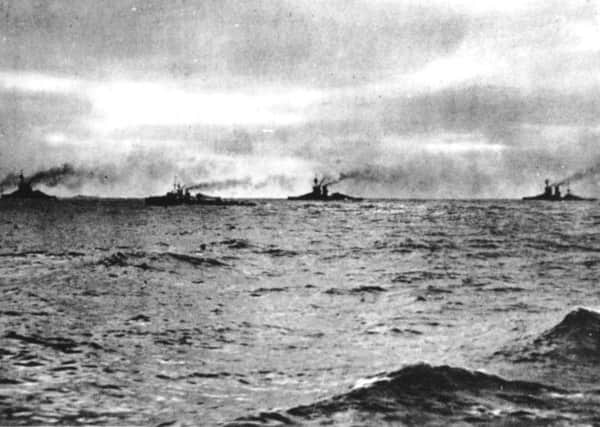Deadly war of attrition as seas turned into battleground during the Great War


THE attack on the North East coast in December 1914 which killed 20 people in Scarborough and Whitby and left many more injured, had been a huge embarrassment to the Admiralty.
As the first year of the war drew to a close German warships had been able to bombard the English coastline several times, and it was only after a skirmish between the nautical superpowers at Dogger Bank, early in 1915, that these German raids ceased.
Advertisement
Hide AdAdvertisement
Hide AdBritain soon began to use its superior fleet to impose a blockade on the German ports and by the end of the war Germany suffered shortages which led to food riots in a number of its towns and cities.
But in 1915 the German’s response to these initial blockades was to try and give the British a dose of their own medicine by embarking on a concentrated campaign of submarine warfare.
In February, German U-boats were turned against merchant ships supplying Britain.
This was after they had enjoyed some successes against British warships and was in retaliation for our increasingly tight blockade that prevented ships carrying vital supplies from reaching Germany.
Advertisement
Hide AdAdvertisement
Hide AdHistorian Dr Peter Liddle, author of numerous books including Britain’s Greatest War Experience: Life At Home And Abroad 1914-1918, says this was a significant moment in the war.
“With the German Navy not coming out of its North Sea ports the long term answer to winning the war was to try and cut their trade links,” he says.
Dr Liddle, a Fellow of the Royal Historical Society and the man responsible for the establishment of the Liddle Collection of war experience archives in the Brotherton Library at Leeds University, says 1915 was the first key year of the blockade and the counter blockade.
“Each side was trying to win by strangling the capacity of the other to continue the war.”
Advertisement
Hide AdAdvertisement
Hide AdEveryone had been expecting, and hoping for, a big decisive battle at sea that would show who really ruled the waves. But instead a war of attrition had started between the British and the Germans.
“It was Lord Kitchener who led the world in his assessment that this was going to be a long war,” says Dr Liddle.
“He shocked his colleagues in the war cabinet by saying the war would last at least three years. Prior to this nobody on either side had thought they were going to be in it for the long haul.”
It was this dawning realisation that led strategists on both sides into adopting a change of tactics.
Advertisement
Hide AdAdvertisement
Hide AdAs Dr Liddle points out, the blockades became a weapon of deprivation. “It was about preventing the other side from being able to wage war. The German U-boats tried to prevent us from bringing in grain and munitions from North America and we tried to stop their overseas trade and supply links from getting through.”
But it wasn’t the first time such tactics had been used. “The Royal Navy had done this before, they had used it against Napoleon a century earlier, it wasn’t a new tactic.”
Although Britain had naval superiority on the surface, the German fleet of submarines posed a serious threat to this dominance by attacking both warships and merchant ships.
The problem for Germany was that its U-boats couldn’t operate by the conventional rules of merchant raiding, and sometimes they torpedoed on sight.
Advertisement
Hide AdAdvertisement
Hide AdIt was a risky policy and on May 7, 1915, the Lusitania, a passenger liner travelling from the United States, was sunk off the south coast of Ireland.
More than 1,000 lives were lost, including young children, and it strengthened anti-German feeling not only in Britain but also in the US, where the tide of public opinion was beginning to turn decisively against Germany.